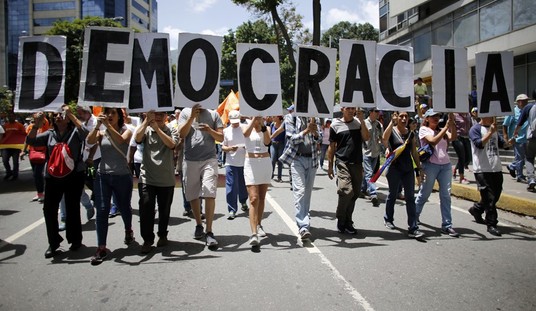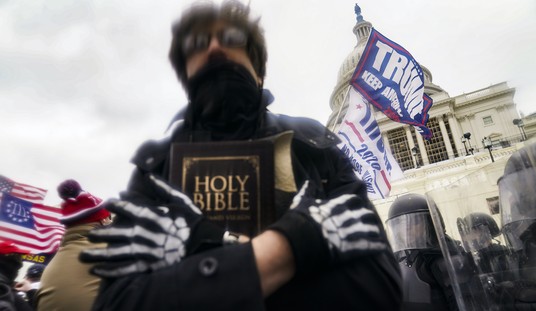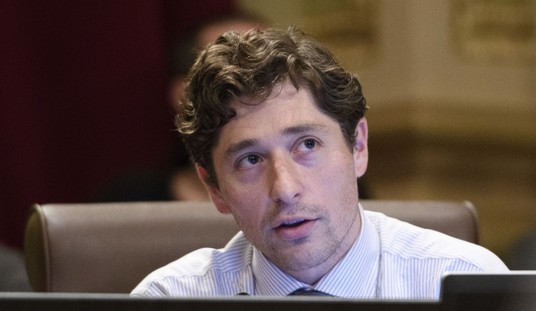Note: Most Thursdays, I take readers on a deep dive into a topic I hope you'll find interesting, important, or at least amusing. These essays are made possible by — and are exclusive to — our VIP supporters. If you'd like to join us, take advantage of our 60% off promotion.
"Jazz is a good barometer of freedom... In its beginnings, the United States of America spawned certain ideals of freedom and independence through which, eventually, jazz was evolved, and the music is so free that many people say it is the only unhampered, unhindered expression of complete freedom yet produced in this country." —Duke Ellington
Legendary jazz vocalist Cleo Laine died last month, age 97, at her home in Wavendon, England. Hardly anyone outside of the most dedicated jazz fans seemed to notice. I'm 56, and probably among the youngest to mourn her passing.
Even so, I didn't think to write the obit I'd been carrying around in my brain for years. Cleo, you see, was born too late. British music critic Derek Jewell once called her "quite simply the best singer in the world," but even at the height of her success in the 1970s, the Washington Post's Mark Kernis had to admit that "She is not a household name. In fact, to many people, she's no name at all."
This week's essay is not about Cleo Laine, although the power and clarity of her four-octave voice, her impressive career, and her almost unrivaled ability to work an audience certainly make her worthy of one.
When Cleo was coming up in the '50s, a jazz artist like her dying would have been big news. Maybe not "LENNON MURDERED IN NEW YORK" or "ELVIS DEAD ON TOILET" big, but still a noteworthy passing.
Again, this isn’t really about Cleo — it’s about the near-silence that followed her death, and what it says about the music she thrilled audiences with for seven decades.
What happened to jazz?
Jazz was originally black music from New Orleans, where African, Caribbean, and European musical traditions all converged, but it was just too damn much fun to stay in one place or be limited to just one race.
"The common root, of course, comes out of Africa. That's the pulse. The African pulse. It's all the way back from the old slave chants and up through the blues, the jazz, and up through rock. And it's all got the African pulse." —Duke Ellington
The rise of radio and records helped its popularity to explode, led by Ellington (PBUH), Louis Armstrong, Paul Whiteman, Benny Goodman, and others. They were masters of the limits imposed by short-playing singles and commercial radio's need to keep things moving fast, and listeners hooked.
Jazz exploded into a dizzying array of forms and formats.
Basie had the common touch with hits like "Jumpin' At The Woodside" and "Did You See Jackie Robinson Hit That Ball." Ellington — our American Debussy — lent jazz not just class, but classicism. George Gershwin made it orchestral with "Rhapsody in Blue" and "An American in Paris." Jazz vocalists, particularly Frank Sinatra, hit you with the kind of sorrow that was previously the soul domain (heh) of the blues.
And so much more. It was a wild time.
And Another Thing: Please don't make me choose between Ellington and Count Basie. But if you must, then I choose Ellington. Because of "Satin Doll." 'Nuff said.
Jazz was never America's only music, but at its swing era heights in the '30s and '40s, it was America's most popular music.
"It is becoming increasingly difficult to decide where jazz starts or where it stops, where Tin Pan Alley begins and jazz ends, or even where the borderline lies between classical music and jazz. I feel there is no boundary line." —Duke Ellington
The big bands like the ones led by Glenn Miller, Artie Shaw, or Benny Goodman might have been more vanilla (whiteness pun only partly intended) or played it a little safer than Ellington or Count Basie did. But there's no denying that swing was the kind of party music that snobs disdained and audiences craved.
Listen — and watch! — to what Goodman and his band (particularly drummer Gene Krupa, arguably the first rock star) did with Louis Prima's "Sing Sing Sing."
Twenty years later — with a couple of hot guitarists instead of all the brass and woodwinds — they'd have a huge rock hit.
Swing's days were numbered, courtesy in part of Uncle Sam. Washington imposed a so-called "cabaret tax" in 1944 on the gross receipts of any "public place where music and dancing privileges... except instrumental or mechanical music alone, are afforded the patrons in connection with the serving or selling of food, refreshment, or merchandise."
Previously on the Thursday Essay: The Tank Is Dead (Long Live the Tank)
At the stroke of FDR's pen — no autopen in those days, despite his rapid decline that year — big bands were priced out of the live performance market they dominated. The cabaret tax helped fuel "the growth of smaller instrumental groups that were emerging with a new style of jazz called bebop," as jazz and classical station WRTI put it.
But there were other factors as well. "Small-group jazz was already on the ascent in 1940s New York," NPR's Patrick Jarenwattananon noted. "Starting in the 1930s, the idea of an 'authentic' after-hours jam session — heavy on experimental and virtuosic improvisation — was fetishized and, inevitably, commodified."
By 1944, the same year the cabaret tax was imposed, Jarenwattananon wrote, "Bebop musicians such as Charlie Parker and Dizzy Gillespie were already brewing a self-consciously progressive, urbane innovation for themselves."
"Some people liked it, including many like-minded musicians, and desired more of it."
"Playing 'bop' is like playing Scrabble with all the vowels missing." —Duke Ellington
Some people?
That’s the moment jazz stopped trying to make you dance — and started trying to impress itself.
I say this as a huge Parker fan, too. I caught Clint Eastwood's 1988 biopic "Bird" when it hit VHS, and came away so impressed that I picked up the soundtrack the next day — just the first of many Yardbird purchases. If my Parker collection isn't quite complete, it is extensive.
And Another Thing: Vocal jazz kept on swinging strong in the '50s and '60s. Frank, of course, but Dean Martin and Sammy Davis Jr. were welcome, if late, additions. The three of them would go on to become an institution — not just in Vegas, but on TV and in movies, too.
Maybe swing was doomed, regardless. Longtime jazz critic Gary Giddins was once asked about big band leader Benny Carter, who never found commercial success — even at the swing era's height, and with a roster of musicians that included greats like J. J. Johnson, Max Roach, and Miles Davis. "He could never afford to successfully keep a band, which was a great source of disappointment to him," Giddins said. "But he wasn’t interested in only having a dance band, and some of his music was just a little too sophisticated for most people."
Emphasis added.
That's the direction jazz took in the post-swing era: sophistication over popularity.
"If people like it, it isn't authentic," was the attitude adopted by jazz musicians — and perhaps especially by jazz critics, who seemed to fancy themselves as gatekeepers to a musical ivory tower. "'Jazz’ is being used too loosely," '50s-era critic Roger Pryor Dodge wrote, building a fence between "real" jazz and the more popular stuff people could dance to or sing along with.
And Another Thing: Back to Cleo for a moment, if you’ll indulge a fan. I might know why she was “no name at all” outside Britain. She could work a live audience like a one-woman swing band, but her studio albums? Too often, they were titles like "Cleo Laine Sleepwalks Through Ten More Dreary Stephen Sondheim Ballads." I don’t know if that was her choice, her label’s, or her management’s — but give "Cleo Laine Live at Carnegie Hall" a listen to hear what she was really capable of.
The rise of smooth jazz and fusion in the 1970s and '80s tried to make jazz more popular. Amazing talents like George Benson, David Sanborn, Grover Washington Jr., and the recently deceased Chuck Mangione did manage to put a dent in the pop charts from time to time, but never very big ones.
What they didn't do was please the palace guards.
"You have to stop listening in categories. The music is either good or it's bad." —Duke Ellington
"We should laugh at those who make artistic claims for fusion," critic Stanley Crouch later wrote. "Beyond Miles Davis’ Filles de Kilimanjaro and a few other recordings here and there, the elements of rock always brought jazz musicians down to where rock was, but in an inferior version: the jazz was diluted, yes, but so was the rock, which became shallower due to the crossover’s ineffectiveness."
It isn't that Crouch doesn't have a point, because there's more than a kernel of truth in what he argues — much as it pains this dedicated smooth-jazz/rock-jazz fan to admit it. But Crouch and other gatekeeper critics can pry my copies of Steely Dan's "Aja" and Benson "Breezin'" out of my cold, dead hands. If then.
The point though is that Crouch — and so many others — had completely internalized that post-swing jazz should be insular, almost unapproachable to the uninitiated. It had become "wanker music," to borrow Roddy Doyle's memorable (if slightly off-color) phrase.
Real jazz was just too precious for the masses. Is it any wonder wider audiences stopped listening?
"You've got to find a way of saying it without saying it." —Duke Ellington
Tastes changed, too, as they inevitably do. If R&B and Rock & Roll are simpler genres than jazz, they're also more accessible — and certainly more democratic. Swing bands were expensive to put together, manage, and tour, even before they got taxed almost to death. But three or four guys with some used instruments and a rehearsal space no bigger than a garage could give becoming rock gods a shot.
But the truth is that news of jazz's death has been greatly exaggerated.
I already mentioned smooth jazz and fusion, but I'd be remiss if I didn't mention just how long some of those supposedly inauthentic artists have been around now. Sanborn died just last year at age 78. He recorded his first album in 1975 and his final one 40 years later. Only a tragically early death in 1999 put a stop to Grover's sax.
Swing made a brief popular comeback in the 1990s, due in no small part to former Stray Cats frontman/lead guitar Brian Setzer launching the Brian Setzer Orchestra in '90. BSO still sells out shows worldwide.
Longer lived was the '90s return of vocal jazz, led by a couple of pianists who could also move crowds with their voices: Diana Krall and Harry Connick Jr.
Maybe it's a coincidence that Krall's arguably best album is "All For You," her tribute to the Nat King Cole Trio. I'm practically begging you here to take a moment and listen to her perform Bobby Troup’s criminally underappreciated "You're Looking At Me."
That's Paul Keller on bass, and he helps make that song work every bit as much as Diana's voice or piano.
Popular performances like Krall's convince me that, no matter what some critics say, there's no need for fans to apologize for jazz that's meant to be enjoyed, rather than merely appreciated. The artists have nothing to apologize for, either.
I could go on (and on and on) about the places artists have taken jazz in this century, but my wife is telling me I have to eat — and my editor is tapping her fingers, waiting for me to finish.
So I'll just say that the records still sell, if not in as many numbers. The audience is still there, if smaller than it used to be. While that makes me a bit wistful, it's OK. If jazz isn't as easy to find, maybe it's because that freedom Ellington named as its essential ingredient is harder to find, too.
Let me finish by knocking your socks off.
After a seven-year recording hiatus, Mel Tormé made his comeback in 1977-78 with back-to-back albums that dazzled you with his virtuosity. The first, cheekily titled "A New Album," was a set of mostly contemporary hits by artists as diverse as Billy Joel ("New York State Of Mind"), Stevie Wonder ("All In Love Is Fair"), and even Paul Williams ("Ordinary Fool"), all set to Mel's impeccable arrangements.
Tormé followed that up almost immediately with an album of unadulterated swing — "Together Again For The First Time" — a collaboration with his old friend, legendary jazz drummer Buddy Rich. The title is a bit of an inside joke because people kept asking the two of them when they'd record another album together, even though they'd never recorded an album together.
"Sing sweet, but put a little dirt in it." —Duke Ellington
The album concludes with a real showstopper performance of the Gershwin brothers' early classic, "Oh, Lady Be Good!" that Mel rewrote as an Ella Fitzgerald tribute.
Behold, "Ella Be Good."
Maybe half the song is Mel's scat and Buddy's drums riffing off each other, while the band somehow manages to keep playing instead of just sitting there slack-jawed and awestruck.
But everything I've tried to say in this essay is right there in Tormé's reworked lyric:
Dixieland, that's jazz
Be-bop, that's jazz
Swing bands, that's jazz
That's jazz — my kinda jazz
Mine, too.
"It don't mean a thing if it ain't got that swing." —Duke Ellington










